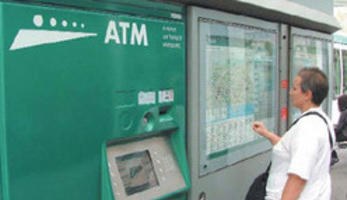Tramway development as part of an integrated public transport system
Thematic areas
Collective passenger transport & shared mobility
- Accessibility
- Bike sharing
- Intermodality
- Service improvements
- Ticketing and tariffs
Summary
The first modern tramway in Barcelona has been put into operation, integrated within the Barcelona transport network. A total of 162,500 square metres of road space were converted into pedestrian areas and new cycle routes, and 135,000 square metres of roads were turned into green planted spaces.
Implementing sustainable mobility
In recent years, the biggest growth in traffic in Barcelona has been related to movements between the city centre and the wider metropolitan area. In order to expand the collective transport offer in the southwest of the city, the metropolitan transport authority, ATM, worked with six municipalities to put into operation the first modern tramway in Barcelona. A new company was established to operate the trams and, for the first time in the city, the tender was organised using a build, operate and transfer (BOT) contract with the participation of the public and private sectors in both the construction and operation stages. The service that runs from Avenue Diagonal to the area of Baix Llobregat (“Trambaix”) combines the latest vehicle technologies with a radical reallocation of street space, offering accessibility to all Barcelona’s citizens in such a way as to reduce the city’s future dependency on petroleum.
Progress
As of 2007, the tramway has a total length of 15 km with 26 stops serving a catchment area of around 350,000 people. The tram system comprises three suburban lines that join to serve a single radial route into Barcelona via the UPC University and new commercial developments along the Avenue Diagonal. The service connects with rail stations and with the metro lines serving the university campus.
The rolling stock is Alstom’s Citadis 302, bi-directional, with five modules in aluminium and steel. It has a capacity of 218 passengers and a maximum speed of 70 km/h. The trams are equipped with automatic vehicle monitoring (AVM) equipment and signal priority is given at 25 junctions along the route.
The service was launched only a few weeks behind the original plan, following changes to junction designs to re-educate those drivers of private vehicles that were unwilling to accept turn prohibitions.
Outcomes
An integrated tariff and ticketing system facilitates the monitoring of passenger volumes. During average workdays in March 2005, the number of passenger/days reached almost 35,000. Surveys undertaken after seven months of operation identified that one-third of passengers were making trips they did not previously make. Of the two-thirds who previously made the same journey, 18 percent used to travel by car and 3 percent by motorcycle. The tram system has achieved a shift of at least 3,300 car journeys.
Running speeds are around 17 km/h, but are affected by reductions in tram/pedestrian conflicts and revisions of signal timing.
Energy and environmental benefits are quantified using data from passenger and household surveys.
This fact sheet has been updated by a third party on the basis of available information (not by the city itself). We are therefore unable to guarantee that the data provided are complete and up to date.









